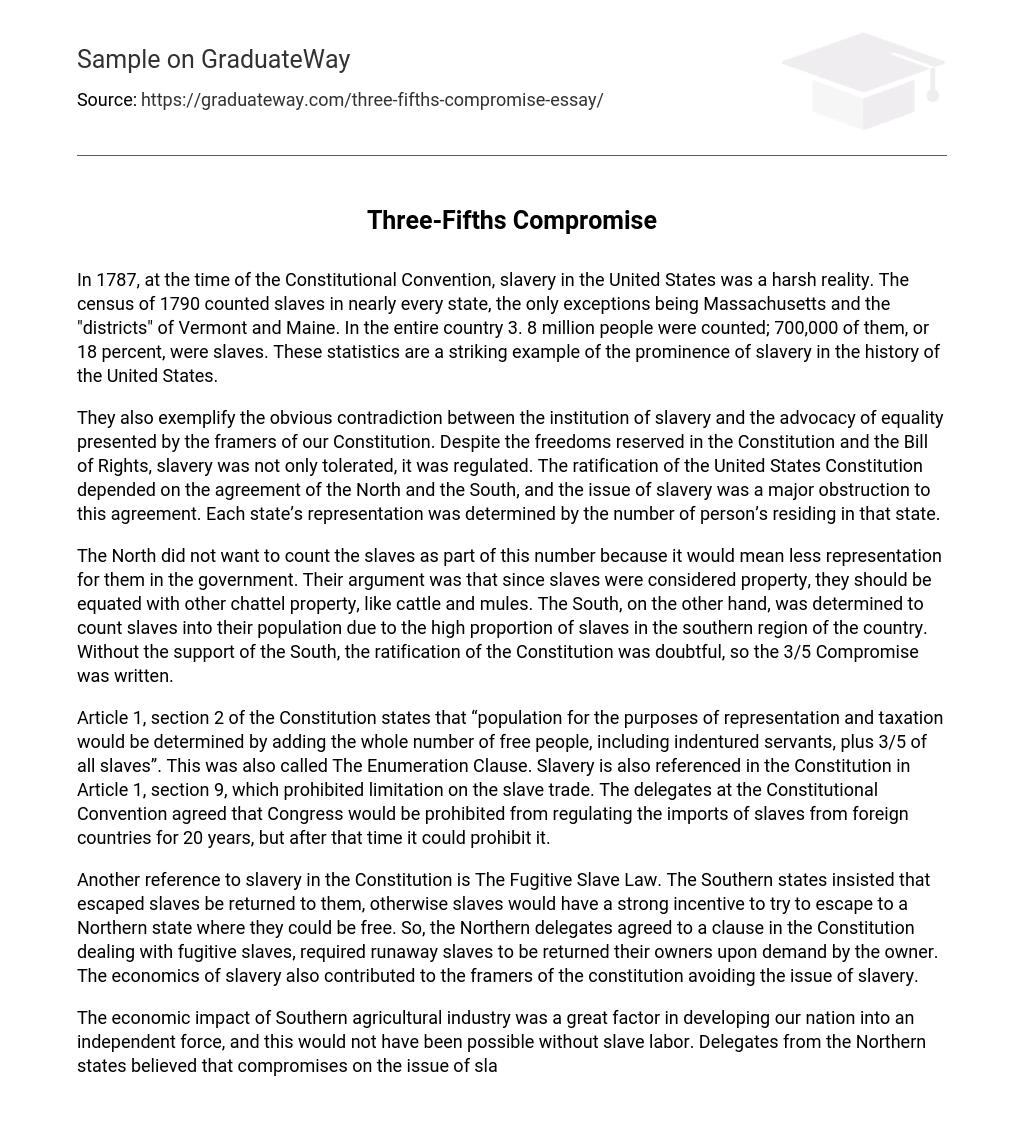In 1787, at the time of the Constitutional Convention, slavery in the United States was a harsh reality. The census of 1790 counted slaves in nearly every state, the only exceptions being Massachusetts and the “districts” of Vermont and Maine. In the entire country 3. 8 million people were counted; 700,000 of them, or 18 percent, were slaves. These statistics are a striking example of the prominence of slavery in the history of the United States.
They also exemplify the obvious contradiction between the institution of slavery and the advocacy of equality presented by the framers of our Constitution. Despite the freedoms reserved in the Constitution and the Bill of Rights, slavery was not only tolerated, it was regulated. The ratification of the United States Constitution depended on the agreement of the North and the South, and the issue of slavery was a major obstruction to this agreement. Each state’s representation was determined by the number of person’s residing in that state.
The North did not want to count the slaves as part of this number because it would mean less representation for them in the government. Their argument was that since slaves were considered property, they should be equated with other chattel property, like cattle and mules. The South, on the other hand, was determined to count slaves into their population due to the high proportion of slaves in the southern region of the country. Without the support of the South, the ratification of the Constitution was doubtful, so the 3/5 Compromise was written.
Article 1, section 2 of the Constitution states that “population for the purposes of representation and taxation would be determined by adding the whole number of free people, including indentured servants, plus 3/5 of all slaves”. This was also called The Enumeration Clause. Slavery is also referenced in the Constitution in Article 1, section 9, which prohibited limitation on the slave trade. The delegates at the Constitutional Convention agreed that Congress would be prohibited from regulating the imports of slaves from foreign countries for 20 years, but after that time it could prohibit it.
Another reference to slavery in the Constitution is The Fugitive Slave Law. The Southern states insisted that escaped slaves be returned to them, otherwise slaves would have a strong incentive to try to escape to a Northern state where they could be free. So, the Northern delegates agreed to a clause in the Constitution dealing with fugitive slaves, required runaway slaves to be returned their owners upon demand by the owner. The economics of slavery also contributed to the framers of the constitution avoiding the issue of slavery.
The economic impact of Southern agricultural industry was a great factor in developing our nation into an independent force, and this would not have been possible without slave labor. Delegates from the Northern states believed that compromises on the issue of slavery were the price for a strong central government. They were convinced that if the Constitution restricted the slave trade, some Southern states would refuse to join the Union.





